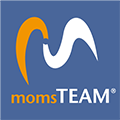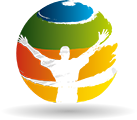
To help youth and middle school and private- and community-based youth sports organizations (YSOs) safeguard the health and safety of children and teens in sports, MomsTEAM Youth Sports Safety Institute is working with national, state, regional and local YSOs, university athletic training departments, parents, health care professionals (doctors, nurses, EMTs, physical therapists, strength and conditioning coaches, nutritionists), allied non-profits, governmental agencies and other experts to aggregate and/or develop and disseminate comprehensive, sport- and issue-specific, and easy-to-understand "best practice" templates and checklists covering all aspects of youth sports health and safety, from injury prevention and risk reduction, and nutrition and hydration guidelines, to preventing all forms of physical, psychological and sexual abuse.
As a Pioneer Organization designated by UNICEF to implement and test the new International Safeguards for Children In Sport, the Institute will be incorporating into SmartTeams the holistic approach to youth sport safety embodied in the Safeguards, which are designed to help create a safe sporting environment for children wherever they participate and at whatever level, provide a benchmark to assist youth sports organizations and sports stakeholders to make informed decisions about safety, promote best practices and challenge practices that are harmful to children, and provide clarity on safeguarding children to all involved in sport. 
While still in the developmental stage, SmartTeams best practices will also incorporate and reflect many consensus recommendations developed by such groups as UNICEF, the National Athletic Trainers' Association, leading medical societies, and governmental agencies such as the Centers for Disease Control and Prevention (CDC), adapted where appropriate, for use by youth sports programs that lack the resources of school-based programs (such as, for instance, relying on volunteers such as nurses, LPNs, EMTs, medical doctors, and other professionals in allied health fields instead of certified athletic trainers.
The SmartTeams best practices will follow the five-step approach to implementation outlined in the International Safeguards for Children in Sport:
- Foundation level. The SmartTeams best practice safeguards are used to raise awareness in a youth sports organization about the need to minimize the risks faced by athletes in the program and inform discussion around the next steps towards implementation.
- Preparing to implement. The SmartTeams best practice checklists are used by the participating youth sports organization to conduct a review to identify current strengths and weaknesses in relation to minimizing the risks faced by children in the organization.
- Action Planning: A written plan is developed which details the steps which will be taken to implement the SmartTeams best practices and International Safeguards, who is responsible for these actions, and a timeline as to when these actions will be implemented.
- Implementation. Strategies and systems outlined within the SmartTeams best practices and Safeguards are implmented.
- Maintaining and Embedding. The SmartTeams program is reviewed on a regular basis (at least every 3 years) and is further developed based on the experiences of children, parents, coaches, and administration.
Among the topics the SmartTeams best practice checklists and templates will cover are the following:
- Emergency preparedness (emergency action plan, first aid, EMS)
- Background checks
- Coaches’ safety training (first aid, CPR, AEDs, concussion awareness.)
- Medical coverage (certified athletic trainers/team doctors/EMS/trained volunteers)
- Facility management (fields/rinks/courts/diamonds/pools etc.)
- Weather safety (lightning, heat/humidity, cold weather, sun safety)
- Education (coaches, parents, athletes, officials, health care providers)
- Risk reduction (proper helmet fit, “heads up” tackling, limiting RHI)
- Identification (e.g. sideline screening, honest self-reporting, use of impact sensors, creation of safe reporting environment, use of buddy system)
- Diagnosis and Management
- Return to Learn
- Return to Play
- Retirement
- Financial controls and transparency
- Corporate governance (e.g. term limits, board training)
- Coach selection, training, and evaluation
- Implementing best health and safety practices (e.g. SmartTeam™)
- Communicating among and between parents, players, coaches, administrators, officials, and health care professionals.
- Sports nutrition basics
- Pre-sports nutrition
- Snacks/meals
- Recovery diet
- Sport-specific nutritional guidelines (football, soccer, etc.)
- Nutrition for the injured athlete
- Disordered eating/female athlete triad
- Concession stands
- Sports hydration basics
- Heat safety (heat acclimatization, emergency preparedness, treatment, exertional sickling)
- Energy drinks
- Sports drinks
- Pre-participation physical exam (PPEs)(family history/EKG/echo)
- Chain of survival (first-aid, CPR, AEDs etc.)
- Emergency Action Plan
- First-Aid
- EMS
- Emotional/psychological (bullying, hazing, verbal abuse by coaches, parents etc.)
- Physical (overuse injuries; playing hurt etc.)
- Sexual (abuse/harassment, background checks, two-adult rule etc.)
- Prevention (goggles, face shields)
- First-aid treatment
- Prevention (e.g. mouth guards)
- First-aid treatment
- Prevention
- First-aid treatment
- Prevention (e.g. overuse injuries, neuromuscular training, strength and conditioning)
- Treatment (e.g. first-aid, physical therapy, return to play)
- Education
- Prevention
- Prevention
- Treatment
Here are some of the best practice checklists that the Institute has started to issue:
Concussions
Education
Concussion Education Best Practices: A Checklist for Parents
Parents' role
Concussion Checklist for Parents
Dental Injuries
Dental Injuries in Sport: Prevention and Treatment
Emergency Action Plan
Emergency Action Plan Needed For Every Youth Sports Program
Eye Injuries
Eye Injury Prevention And First Aid
Musculoskelatal Injuries (Treatment)
P.R.I.C.E. Is Right First Aid Treatment For Most Muscle and Joint Sports Injuries
Safety Training
Safety Training A Must For All Youth Sports Coaches



